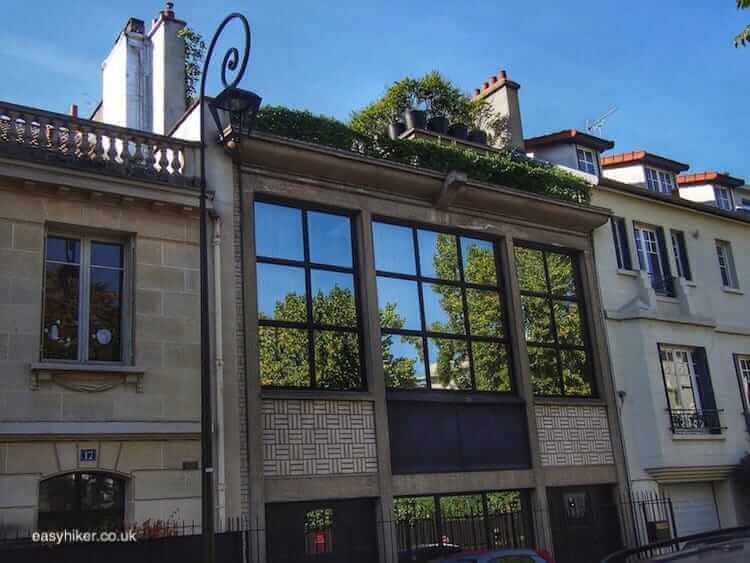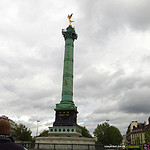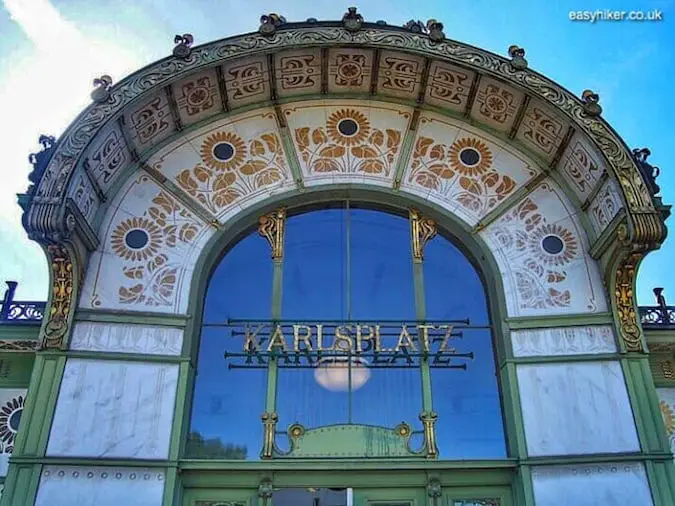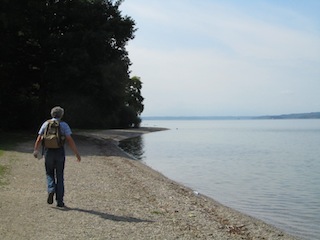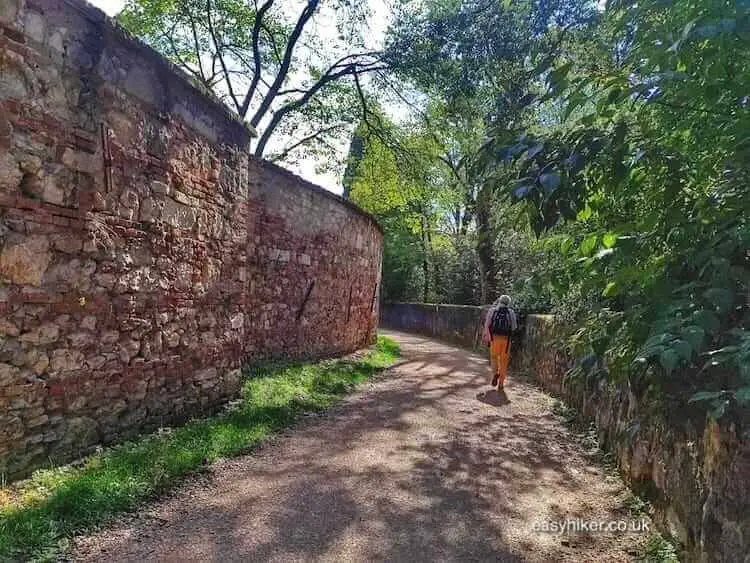Throughout history, few large cities in the world have managed without a navigable waterway, but there are some whose river or canal passes out of sight and out of town, through countryside or distant suburbs. (Milan is an example for this, as is – more surprisingly, perhaps – Vienna).
This applies to Strasbourg as well, at least inasmuch as the Rhine is concerned, the river with which the city is most commonly associated. In fact, the Rhine passes Strasbourg quite a long way away, but the city is connected to the river through a dense network of partly natural and partly artificial waterways that provide the timber-framed old town with a unique charm and atmosphere, creating a blend between a German fairy tale town and Venice.

A Walk Around the Ring of Water
The natural waterway that connects Strasbourg with the Rhine is the river Ill (not the Roman numeral but an “I” followed by a double “L”), which has been artificially extended by a canal called the Fossé du Faux Rempart. River and canal together form a 3 km long ring of water that embraces the Grand Ile, the core of Strasbourg’s historic town.
Alongside the ring runs a waterside promenade that is great for a lazy little stroll, just the right kind of light exercise to walk off a heavy Alsatian lunch.

Strasbourg’s “Ring of Water” has served two functions throughout its history: initially, in the high Middle Ages, it was designed as a protective barrier against attacks from the outside and featured a wall along its entire length.
This wall was only removed in the 1830s, but even after that, the military purpose of the old structure did not immediately become irrelevant. The Barrage Vauban in the southwestern corner of the ramparts, …
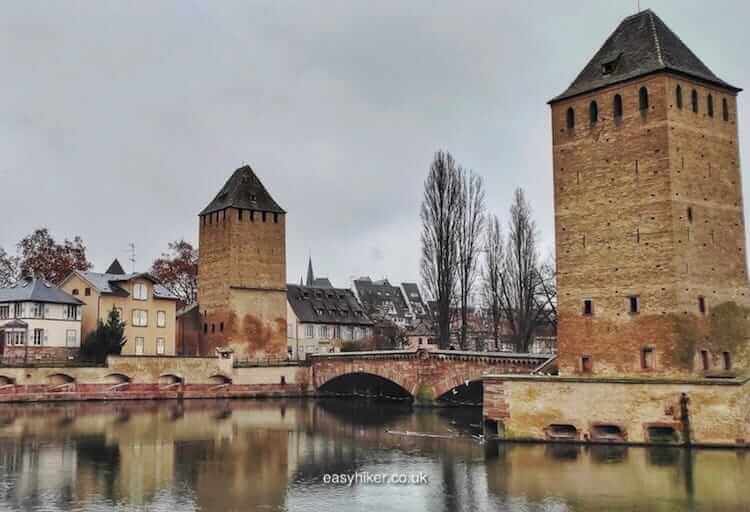
… which had been added in 1700 for the sole purpose of providing the defenders of the city with the option of flooding the area south of Strasbourg in the event of an attack, was used to slow down the German advance in the war of 1870.
Slow them down it did but not by much, ultimately failing to save either Strasbourg or France.
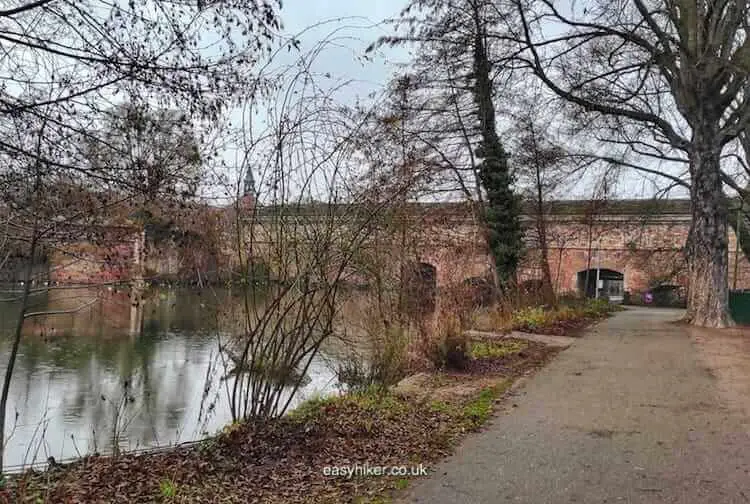
Long before, however, in the 16th century, the Fossé du Faux Rempart had already begun to serve another purpose, having become the main business hub for the city’s tannery and merchant companies.
Four smaller canals were added to the network in the southwestern corner of the Grand Ile (just behind where the Barrage Vauban stands today), while the water of the Ill was conducted over artificial weirs to power the city’s mills.
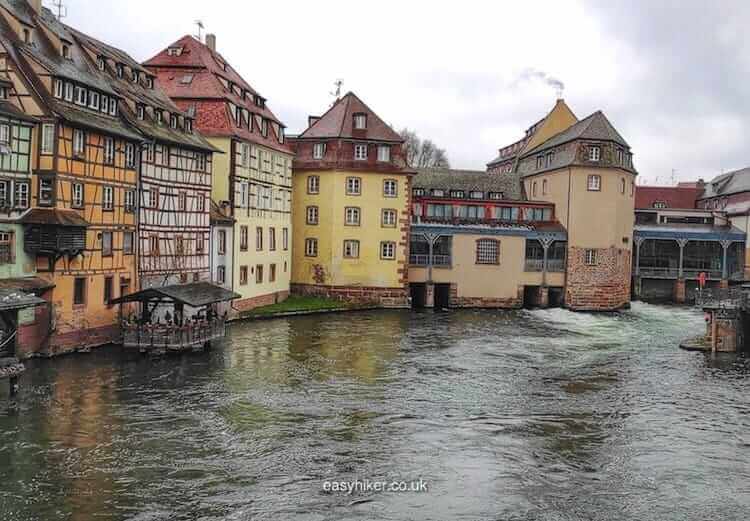
In other words: This part of the Old Town – called the Quartier des Tanneurs or Petite France – was built as an industrial quarter, and while it may be extraordinarily picturesque by today’s standards, it would not necessarily have been rated in this way by the standards of its own time.
Vauban (the designer of the “Barrage”), meanwhile, was more of an engineer than an architect and never built anything as frivolous as a residential home or, heaven forbid, a palace.
We find these utilitarian structures attractive now because the architects of the past had been so thoroughly schooled in ideas of classical beauty that they applied these principles to everything they ever made.
Nobody builds like than any longer, and it is therefore unlikely that the utilitarian structures of our own time – industrial harbours or Amazon warehouses – will delight tourists of the 25th century. You can call that progress, if you want to.
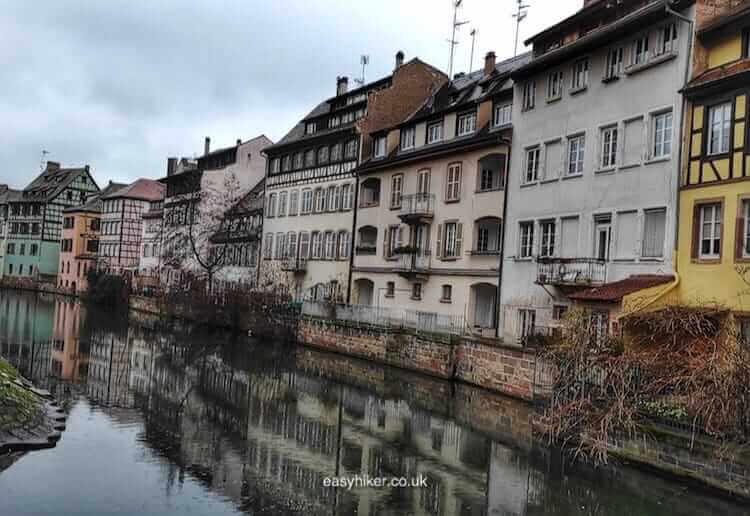
The name of the quarter, “Petite France”, by the way, was never meant to indicate the presence of a “French quarter”. Instead, it was a mischievous reference of medieval Strasbourg’s German-speaking population to the “French disease”: it was here where the hospital for the city’s syphilitic patients once stood.
Until 1681, Strasbourg was part of the German Empire, and even today, all streets in the historic town centre have two official names, one in French and one in Alsatian (which is a dialect of German).
As does the city’s most famous site, the Fasanenbrücke / Pont du Faisan, a 16th century movable bridge which is still regularly swung open to let boats pass through – although the only boats that do so these days carry tourists rather than commercial freight of a more traditional sort.
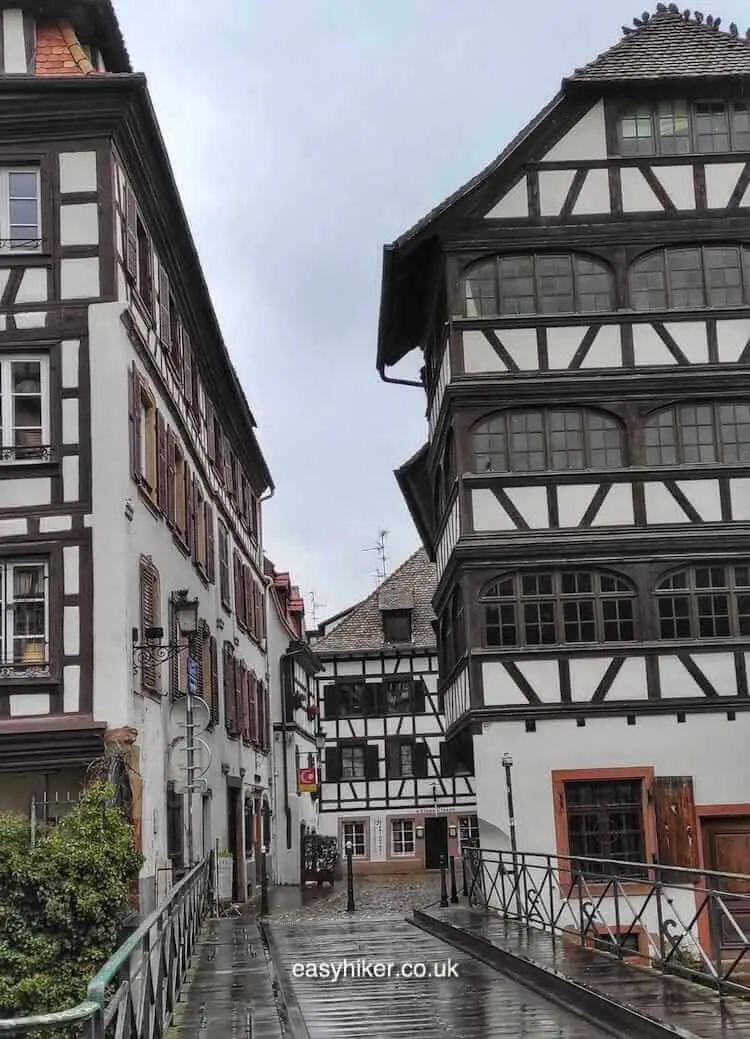
Petite France and the Barrage Vauban are the stars of the trail around the Fossé du Faux Rempart, providing its most scenic views …
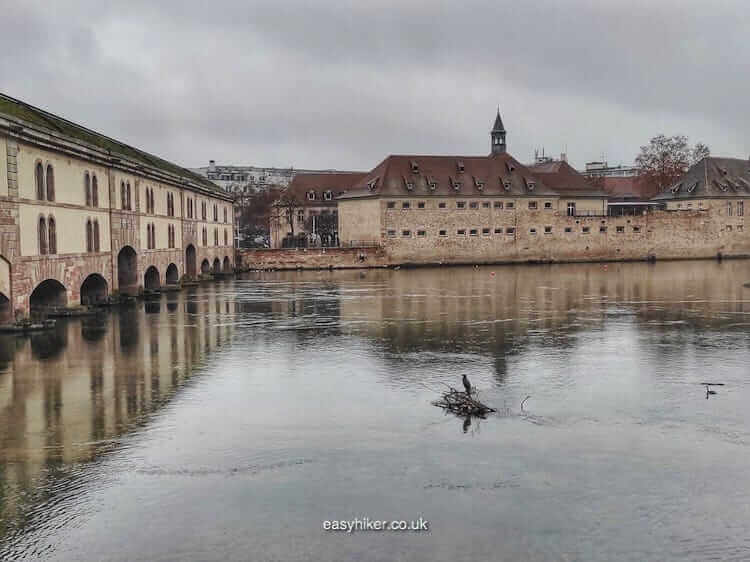
… but the rest of the route has a charm of its own, too.
On a bright sunny day in spring it is surely a joy to promenade under the trees by the side of the canal.
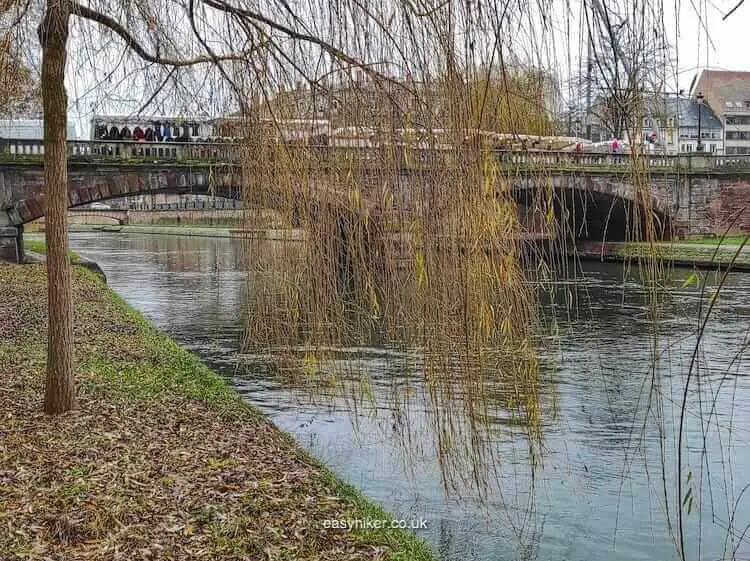
If, however, you happen to visit Strasbourg – like us – on a gruesomely cold and rainy day in mid-winter, you may be unable to resist the temptation of cutting your walk short.
Under these circumstances, you shall be forgiven if you make a turn for the heart of the Old Town about half-way through the trail (roughly at the level of the Pont de Paris if you follow it clockwise), heading for the heart of the Grand Ile with the Cathedral …
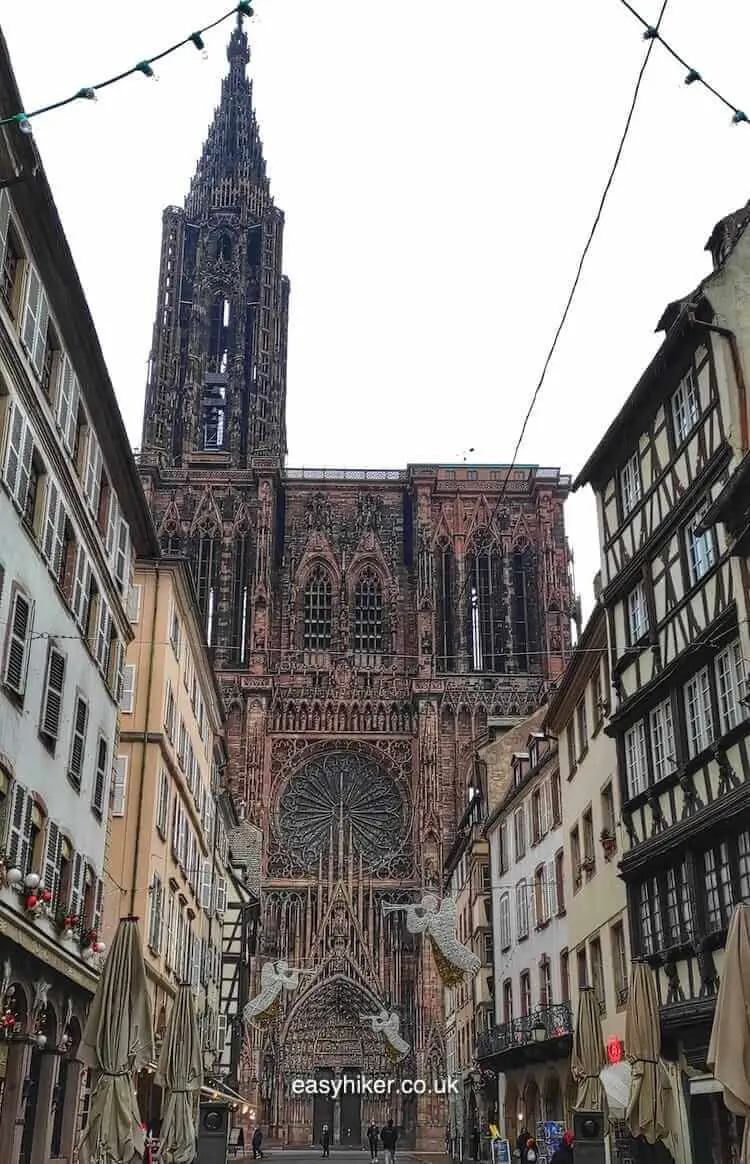
… and the ancient City Hall District around Place Gutenberg …

… or any place, anywhere where it is warm and cozy and where a merciful angel will serve you a hot drink after your walk around the Ring of Water of Strasbourg.
Sufficiently defrosted and fortified, you will then be ready to return to the canal and complete your walk on the other side of the Grand Ile …

… whether or not the rain has stopped.

